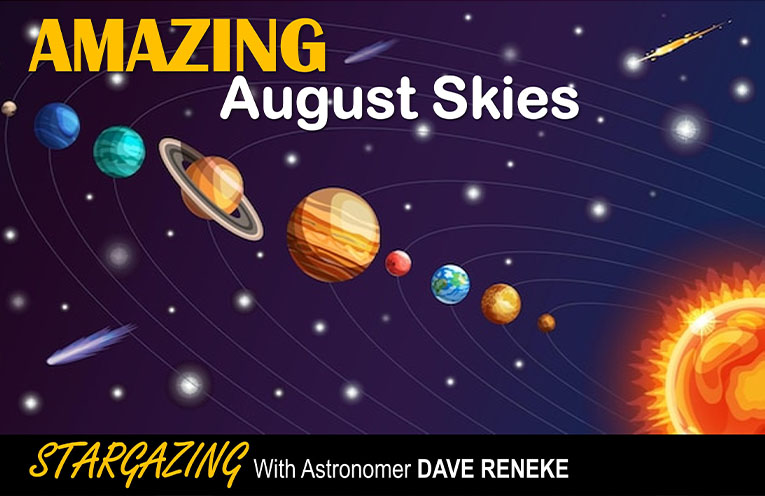IF you’ve ever needed a reason to step outside, tilt your head back, and marvel at the heavens, August is it.
This month, the night sky becomes a stage for some of the most breathtaking celestial performances you’re likely to witness in years – and here in Australia, we have front-row seats.
It all began last week with a silver-washed landscape under one of the brightest full moons of the year, perfect for a midnight wander or a few atmospheric photos under moonlight. But that’s just the opening act.
The cosmos is about to deliver a quadruple feature that would make even Hollywood jealous.
First up, the Perseid meteor shower is underway.
Caused by Earth ploughing through debris left behind by Comet Swift-Tuttle, this annual show can produce dozens of meteors per hour.
They appear as fast, bright streaks dashing across the night sky, some leaving glowing trails in their wake.
No telescope needed – just a dark spot, a warm drink, a reclining chair, and perhaps a wish or two.
This week Venus and Jupiter – the two brightest planets in the pre-dawn sky edged close together in what’s called a conjunction.
To the naked eye, they appeared to almost touch, an awe-inspiring sight that ancient civilisations once interpreted as omens of great change.
Whether you see prophecies in the stars or just a beautiful sight, this rare planetary pairing is still visible but widening and definitely hard to forget!
Then, as if the sky’s putting on a grand finale mid-month, 18 August brought something truly rare: a six-planet alignment. Mercury, Venus, Mars, Jupiter, Saturn, and Uranus will line up across the early morning sky like pearls on a cosmic string. Just look east before sunrise, it’s a planetary parade that comes along maybe once a decade.
A few days later, on 21 August, a slender crescent Moon will nestle close to Mercury low on the western horizon just after sunset.
It’s a fleeting moment, easily missed, but charming to catch, especially since Mercury, being so close to the Sun, often plays hard to get.
August closes with a rare and curious phenomenon: the ‘Black Moon’ on the 22nd.
If you’ve not heard that term before, it’s the second new Moon in a single month – a trick of the calendar that results in a sky devoid of any moonlight.
While you won’t see the moon itself, the darkness it brings makes for ideal deep sky observing.
Faint galaxies, star clusters, and the Milky Way’s bright, ghostly core will shine all the more clearly.
Add to this Saturn reaching opposition later in the month with its rings lightly side on is a gob smacker in even modest backyard telescopes, making August a celestial buffet for astronomers and dreamers alike.
Our region, with its expansive dark skies and minimal light pollution, is one of the best places on Earth to experience it all.
So, whether you’re watching from your back deck, a windswept beach, or a quiet country paddock, don’t miss what August has to offer.
The sky will be alive with motion, mystery, and majesty – a reminder that the universe, ever so often, loves to show off.
By Dave RENEKE, Astronomer



